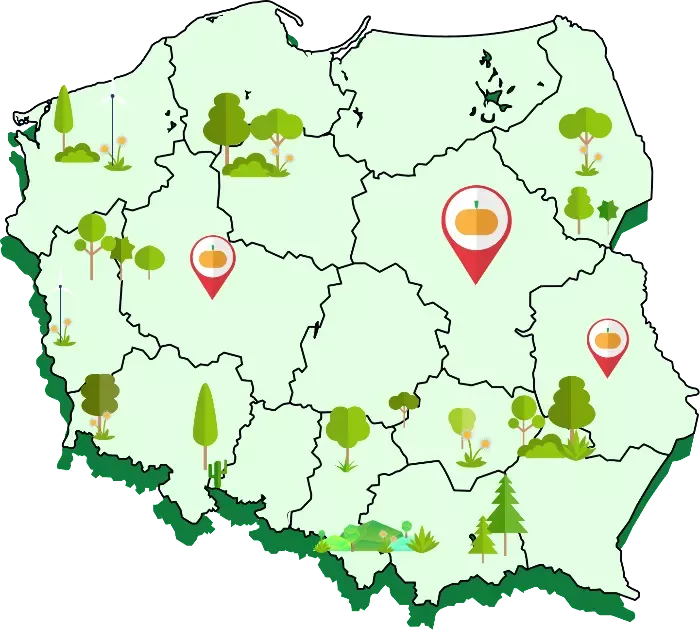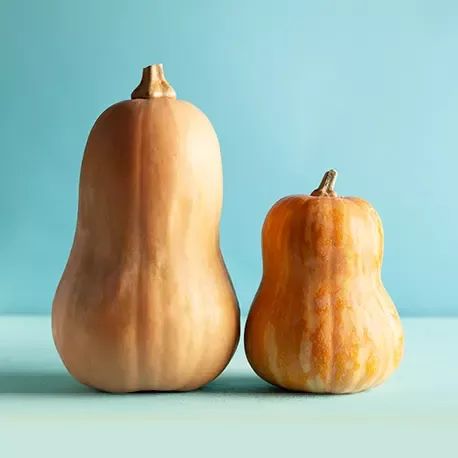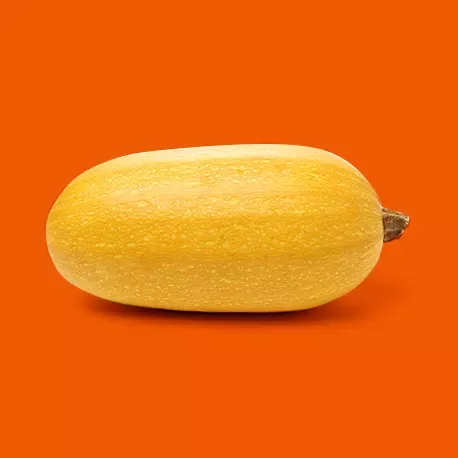Pumpkin
It is a thermophilic vegetable that delights us with its variety of its shapes, forms and colours. The pumpkin season falls in late summer and early autumn. Pumpkin is a rich source of beta carotene, or provitamin A. The more intense the colour of the vegetable, the higher the content of this vitamin.

Pumpkin is an extremely versatile vegetable - it is the perfect base for salty, sweet, savoury and spicy dishes. Keep in mind that pumpkin can also be used to make pureed juices combined with vegetable or fruit juices.
Pumpkin is not only the flesh, but also the seeds. They make a perfect healthy snack. They are also used as substrate for the pressing of aromatic oil.
Pumpkin is a vegetable that comes in many shapes and forms. Whether orange, green, brown, silvery or decorative varieties with fickle shapes, the pumpkin is the uncrowned queen of early autumn.
SPECIES
Giant pumpkin
It is the most widely cultivated variety in our country. Its showy fruits are orange, ribbed, with a fairly hard skin. The flesh is firm, although it becomes quite watery when cooked. The seeds can be used to produce oil.
Hokkaido pumpkin
Increasingly available commercially. Its fruits are medium-sized, pear-shaped, reaching 1-3 kg. Its flesh is dark orange, aromatic, with a firm texture. It is ideal for baking. Its flavour is somewhat reminiscent of sweet chestnuts. Its skin is edible and does not need to be peeled.
Spaghetti squash
Its skin is light yellow or yellow with green stripes. In shape and size it resembles a large melon. Once baked, its light flesh forms characteristic strands that can be easily separated from the tough crust with a fork. It is a perfect substitute for classic pasta.
Butternut squash
Its shape is somewhat reminiscent of a gourd. The colour and texture of the flesh is very similar to that of the giant pumpkin, as is the culinary use.
NUTRITIONAL VALUE
Nutritional values per 100g of cooked pumpkin:
ENERGY VALUE
PROTEIN
FATS
CARBOHYDRATES
VITAMIN C
BETA-CAROTENE
Pumpkin FOR YOUR HEALTH!
Good for the cardiovascular system
Regular consumption of pumpkin has beneficial anti-cholesterol effects. It prevents the accumulation of atherosclerotic plaque. The antioxidants it contains help alleviate inflammation within the blood vessels which promotes their proper function.
For a shapely figure
Pumpkin is very low in calories. Served roasted, boiled or puréed, it will effectively help control body weight. Be wary of high calorie additives like cream, fats or roux added to pumpkin dishes.
For healthy eyes
Carotenoids, found in pumpkin in high amounts, can improve eye health. This is particularly important for older people who are more prone to vision problems. It has been proven that beta carotene can aid sharpness of vision and counteract night blindness.
Good for children
Pumpkin is a smooth tasting vegetable perfect for expanding the diet of children. Mixed in a mushy soup or served in pureed juices, it is an easily digestible and low-allergenic product.
PRODUCTION MAP
Pumpkin production in Poland is becoming increasingly popular. We rank among the top five producers of this vegetable in the European Union. Pumpkin is grown, for instance, in the Mazowieckie Voivodship, the Lubelskie Voivodship and the Wielkopolskie Voivodship.






